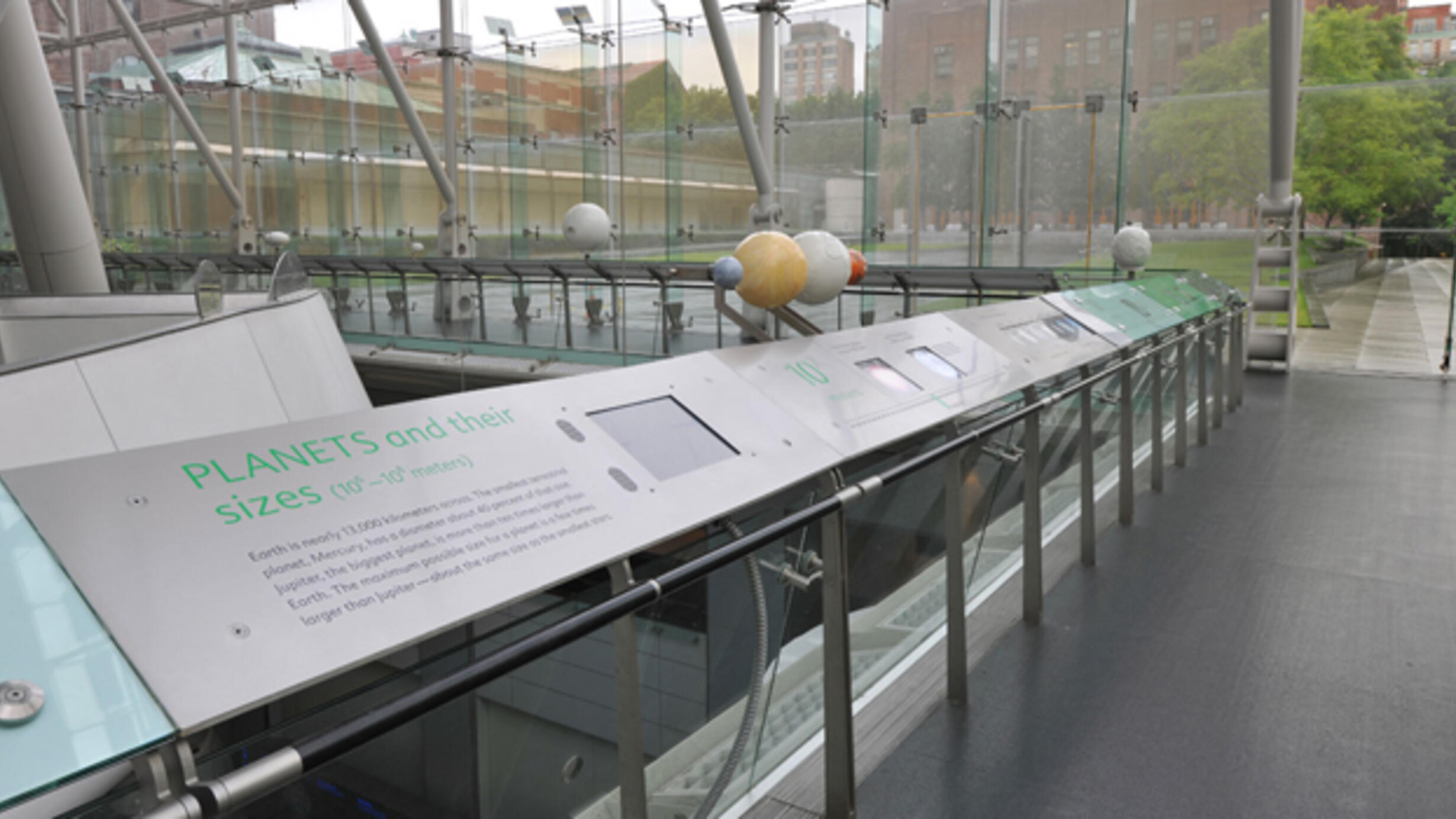Planets and Their Sizes
Part of Scales of the Universe.

Earth is nearly 13,000 kilometers across. The smallest terrestrial planet, Mercury, has a diameter about 40 percent of that size. Jupiter, the biggest planet, is more than ten times larger than Earth. The maximum possible size for a planet is a few times larger than Jupiter - about the same size as the smallest stars.
AMNH/D. Finnin
AMNH/D. Finnin
AMNH/D. Finnin
AMNH/D. Finnin
AMNH/D. Finnin
AMNH/D. Finnin
AMNH/D. Finnin
AMNH/D. Finnin
AMNH/D. Finnin
AMNH/D. Finnin
In This Section
Exhibit
Mercury
If the Hayden sphere is the size of the Sun, then this model is the relative size of Mercury.
Exhibit
Venus
If the Hayden sphere is the size of the Sun, then this model is the relative size of Venus.
Exhibit
Earth
If the Hayden sphere is the size of the Sun, then this model is the relative size of Earth.
Exhibit
Mars
If the Hayden sphere is the size of the Sun, then this model is the relative size of Mars.
Exhibit
Jupiter
If the Hayden sphere is the size of the Sun, then this model is the relative size of Jupiter.
Exhibit
Saturn
If the Hayden sphere is the size of the Sun, then this model is the relative size of Saturn.
Exhibit
Uranus
If the Hayden sphere is the size of the Sun, then this model is the relative size of Uranus.
Exhibit
Neptune
If the Hayden sphere is the size of the Sun, then this model is the relative size of Neptune.
Exhibit
Janus
If the Hayden Sphere is the size of Earth, then this model is the relative size of Saturn’s moon Janus.
Exhibit
Meteor Crater
If the Hayden Sphere is the size of Saturn’s moon Janus, then this model is the relative size of Meteor Crater.
Exhibit
The Hayden Sphere and Humans
If the Hayden Sphere is the size of Meteor Crater, then this model is the relative size of the Hayden Sphere.
Exhibit
Raindrop
If the Hayden Sphere is the size of the human brain, then this model is the relative size of a raindrop.
Exhibit
Red Blood Cell
If the Hayden Sphere is the size of a raindrop then this model is the relative size of a red blood cell.
Exhibit
Rhinovirus
If the Hayden Sphere is the size of a red blood cell, then this model is the relative size of a rhinovirus.